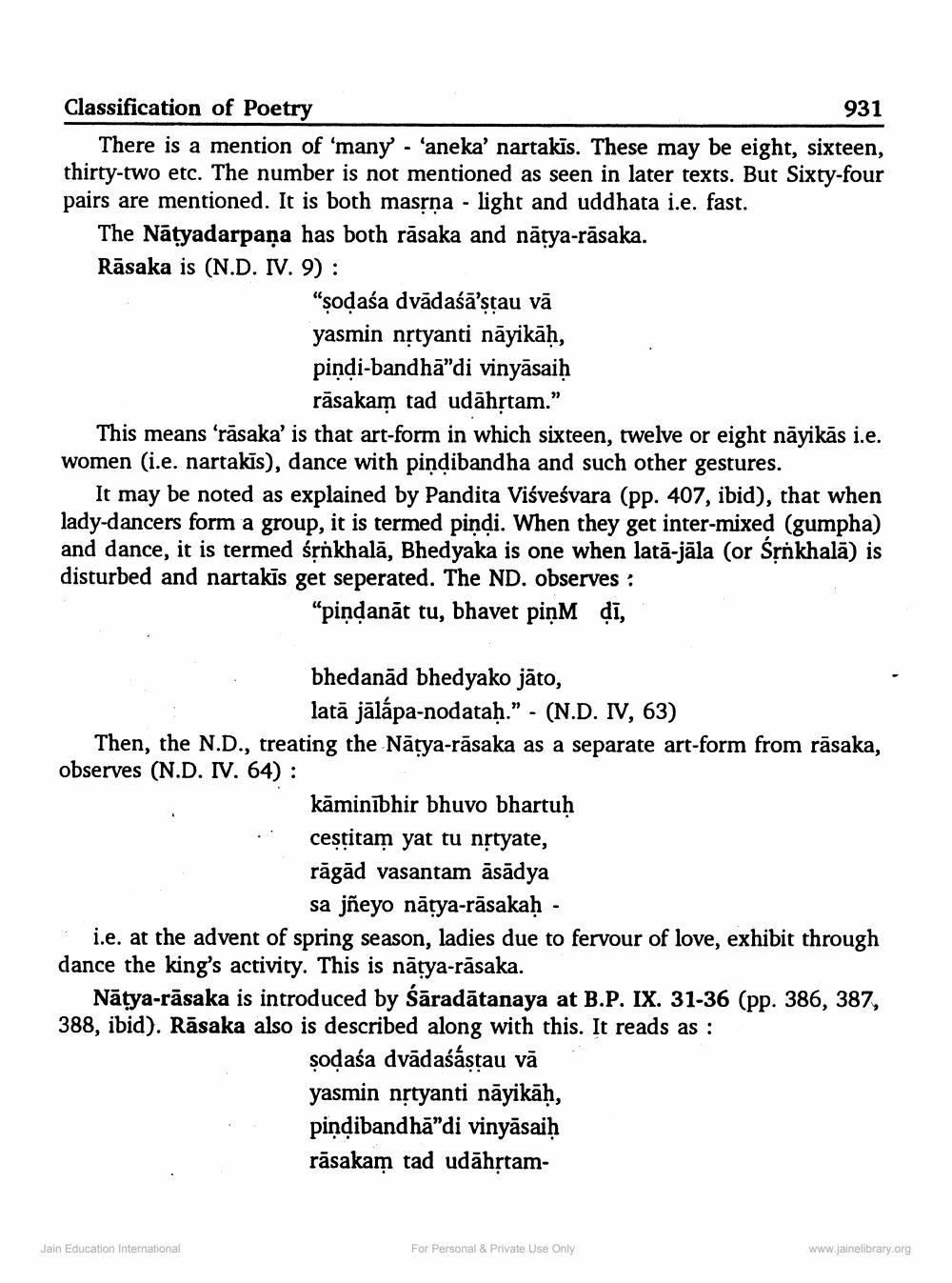________________
Classification of Poetry
931 There is a mention of 'many - aneka' nartakis. These may be eight, sixteen, thirty-two etc. The number is not mentioned as seen in later texts. But Sixty-four pairs are mentioned. It is both masrna - light and uddhata i.e. fast.
The Nātyadarpaņa has both rāsaka and nārya-rāsaka. Rāsaka is (N.D. IV. 9):
"sodaśa dvādaśā’sțau vā yasmin nộtyanti nāyikāḥ, pindi-bandhā”di vinyāsaiḥ
rāsakam tad udāhstam.” This means 'rāsaka' is that art-form in which sixteen, twelve or eight nāyikās i.e. women (i.e. nartakis), dance with pindibandha and such other gestures.
It may be noted as explained by Pandita Viśveśvara (pp. 407, ibid), that when lady-dancers form a group, it is termed pindi. When they get inter-mixed (gumpha) and dance, it is termed śộnkhalā, Bhedyaka is one when latā-jāla (or śộnkhalā) is disturbed and nartakīs get seperated. The ND. observes :
"piņdanāt tu, bhavet piņM đi,
bhedanād bhedyako jāto,
latā jālápa-nodataḥ.” - (N.D. IV, 63) Then, the N.D., treating the Nātya-rāsaka as a separate art-form from rāsaka, observes (N.D. IV. 64) :
kāminībhir bhuvo bhartuḥ cestitam yat tu nộtyate, rāgād vasantam asadya
sa jñeyo nātya-rāsakaḥ - i.e. at the advent of spring season, ladies due to fervour of love, exhibit through dance the king's activity. This is nātya-rāsaka.
Nātya-rāsaka is introduced by śāradātanaya at B.P. IX. 31-36 (pp. 386, 387, 388, ibid). Rāsaka also is described along with this. It reads as :
sodaśa dvādasástau vā yasmin nộtyanti nāyikāḥ, piņdibandhā"di vinyāsaiḥ rāsakam tad udāhstam
Jain Education International
For Personal & Private Use Only
www.jainelibrary.org




